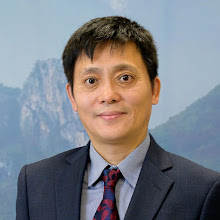On 24 March, the National Institute for Health and Clinical
Excellence (NICE) released a
draft of its updated guideline. Acupuncture, recommended in the
previous version was no longer being recommended for the treatment of non-specific
low back pain and sciatica.
Acupuncturist
across the UK have expressed serious concerns regarding the correctness of the
findings expressed in this revised guideline, and formal responses have been
made by primary stakeholders such as ATCM and BAcC. Research evidence, clinical
case records and statistical analysis have all been collated and provided to
NICE, electronically, in hard copy, and verbally at the NICE Public Board
Meeting on 18th May, by representatives
of the above professional bodies
Why
NICE is wrong in this case?
Firstly,
measures applied to the assessment of effectiveness of a pain killer are not
appropriate for the assessment of a therapy such as acupuncture.
Pain
killer is a fixed production, each tablet has the exactly same chemical component,
the same doses, of course it will produce the same effect on human whom suffer
from the same disease. Acupuncture is not a production, it is a therapy. Although
all acupuncture treatment looks similar, practitioners just simply insert
needles into skin, but the acupoints selection is different, the depth, angles
and manipulation are much different. Acupuncture is a therapy which depends on
the technique and knowledge of individual practitioner. The effects of acupuncture
are varied. How can we evaluate acupuncture effect just based on few clinical
trial reports?
The
comparison of a pharmaceutical intervention against a placebo can give a
representative and absolute analysis of the effectiveness of that pharmaceutical,
but the efficacy of a therapy cannot be confirmed in such a manner, as the
therapeutic results are entirely dependent on the case by case treatment
administered by the practitioner. The so called placebo or ‘sham’ treatment is
effectively an attempt at consistent malpractice on the part of the
practitioner. Appendectomy
is recommended by NICE for acute appendicitis treatment, but if the
operator is a physician or an acupuncturist nobody will recommend this
operation.
Secondly,
side effects should be taken in to account when assessing the effectiveness of
a treatment.
Pain
killers usually have very good effect after taken or injection. But its side effect
shouldn’t be ignored. In clinical we often found some pain killers released
joint pain or headache but it cause stomachache or liver function damage. From paracetamol
to tramadol and morphine, their side effect is proportional to their function. Better
effect always along with stronger side effects. Long term use pain killer will
lead another problem – addiction. Acupuncture can reduce the doses of pain
killers and even can replace the pain killer that is why it was widely accepted
by patients all over the world. If NICE stop recommend acupuncture for treat
low back pain, more patient will suffer from the side effects of pain killers.
Thirdly,
there is the cost dimension.
The cost of direct health care
for back pain in the UK in 1998 was estimated to be £1,632 million[1].
The management of chronic back pain amounting to 4.6 million appointments per
year or 793 full time GPs at a cost of £69 million[2]. This is on
the basis of the current shared workload between General Practitioners and
Acupuncturists. If NICE stop recommend
acupuncture in low back pain treatment this number will be definitely higher in
the future.
NCEI had made
a lot right direction to the public health in the past 17 years, but this time
I have to say they are completely wrong. They should reconsider their
conclusions in respect of acupuncture for low back pain and sciatica. Otherwise
it will mislead public to the wrong direction of their treatment.
Reference
1.
Maniadakis, N. The economic burden of back pain in the UK.
Pain. 2000; 84(1): 95–103.
2.
Belsey,
J. Primary
care workload in the management of chronic pain. A retrospective cohort study
using a GP database to identify resource implications for UK primary care. Journal of Medical Economics.2002; 5, 39-50.

